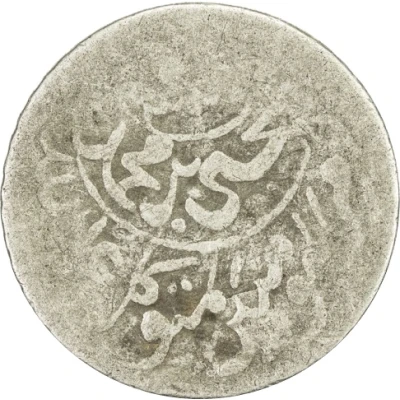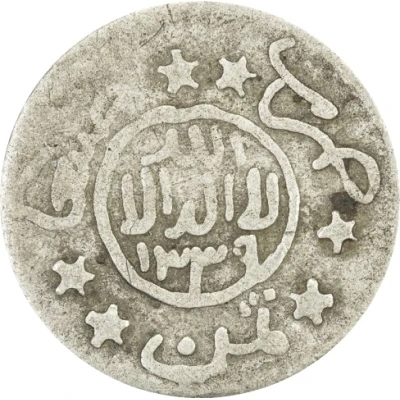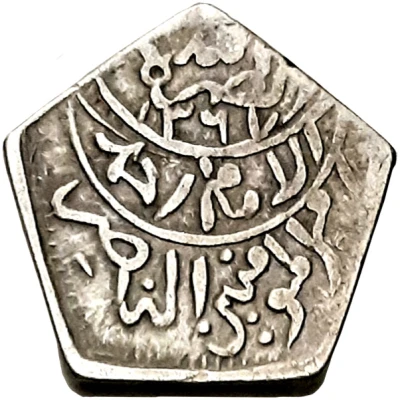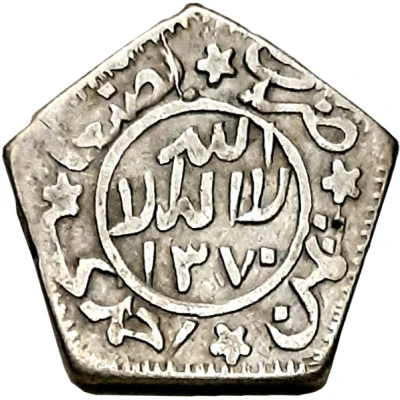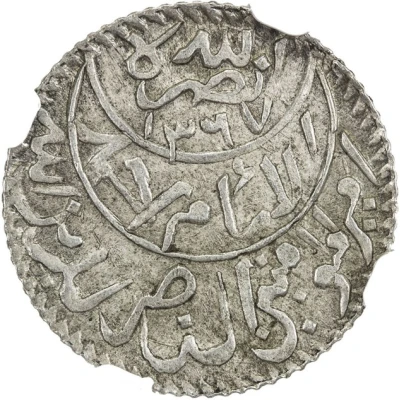
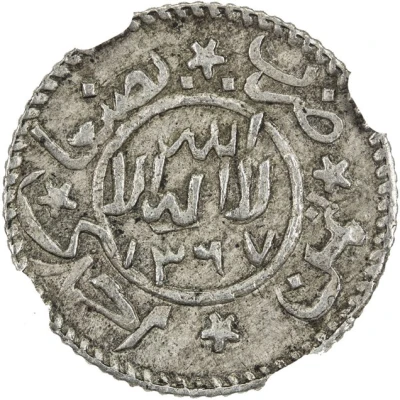

© ArabianCoins
⅛ Ahmadi Riyal - Ahmad Round
1367 (1948) year| Silver | 3.26 g | 18 mm |
| Issuer | Mutawakkilite Kingdom (North Yemen) |
|---|---|
| King | Ahmad bin Yahya (1948-1962) |
| Type | Standard circulation coin |
| Year | 1367 (1948) |
| Calendar | Islamic (Hijri) |
| Value | ⅛ Rial |
| Currency | Rial (1918-1974) |
| Composition | Silver |
| Weight | 3.26 g |
| Diameter | 18 mm |
| Shape | Round |
| Technique | Milled |
| Demonetized | Yes |
| Updated | 2024-10-09 |
| Numista | N#189817 |
|---|---|
| Rarity index | 93% |
Reverse
Script: Arabic
Comment
YEMEN: Ahmad b. Yahya, 1948-1962, AR 1/8 ahmadi riyal, San'a, AH1367, Y-—, Zeno-114362 (same dies), this appears to be the 2nd known specimen, with the example of Zeno the other one confirmed, clearly one of the greatest rarities of the 20th century! NGC graded AU55, RRRR. Vladimir Suchy has described this important piece on Zeno: "I can just assume, that imám Ahmad decided to re-introduce to Yemení monetary system 1/8th riyál (and introduce 1/16 th and 1/2 riyál!). Circular flan was soon abandoned, and to distinguish it better from then circulated 1/10th riyál and 1/4 riyál, the pentagonal flan was choosed. In AH1368 there was another short-lived attempt to distinguish 1/8th from 1/16th (riyál) ahmadí by introducing hexagonal flan." The hexagonal type is Y-14a, another failed attempt to override the pentagonal 1/8 riyal already commenced in AH1367.Interesting fact
The ⅛ Ahmadi Riyal coin from the Mutawakkilite Kingdom (North Yemen) was minted in 1948, during the reign of King Ahmad bin Yahya, and it features a unique blend of traditional Islamic design and modern elements. The coin's obverse side features an Arabic inscription that reads "Al-Sultanu al-Mutawakkil Ahmad" (The Reigning Sultan Ahmad), while the reverse side features a stylized depiction of a palm tree, which is a common motif in Islamic art and symbolizes prosperity and good fortune. The coin's silver content and round shape also add to its unique character and historical significance.
